There’s a prevailing myth that a good baker should be able to craft all manner of excellence from a cheap bag of strong white flour, a mixer on its last legs and an ancient temperamental deck oven just months from being scrapped. If you’re in that situation, tell your bakery manager from me that, in the right hands, the best equipment will increase sales and pay for itself.
When it comes to the flour it’s you, the baker, I need to talk to. We all get cross with ourselves at times when we feel our skills aren’t covering the shortfalls in our ingredients, whether it’s butter with a high moisture content that makes puff pastry flabby and heavy, or old yeast that’s lost much of its oomph. So it’s no surprise that, to some extent, we all hope our skills are enough to transform any flour into any baked good: perfect pitta bread and pizza from strong white flour, amazing puff pastry and brioche from plain white flour.
Sure, it may be that your customers and staff won’t know the difference and will ’oooh’ at your handiwork regardless. It could be that you’re trying to create a new category say the ’British Baguette, made with 100% UK wheat’. It has a ring and would probably sell well.
But if you’re the kind of baker who likes to fine-tune a recipe to perfection, adding characteristics to the crust and crumb you don’t get with your usual flour, then a combination of a speciality flour and slightly modified handling methods will produce just what you want.
Small mills, the original specialists
Wherever possible use local flour where it will be effective. On the Traditional Cornmillers Guild website (www.tcmg.org.uk) you’ll find a list of small watermills and windmills around Britain. Not all mills make flour on-site and it’s best to verify that the flour sold really is from their mill, but if it is and you can work out an arrangement to use their wholemeal flour in a special loaf, that will add a character to the labelling and it will sell well if both you and the mill are in the same county.
Stone-milled flours will contain much more of the bran and fibre, and need to be handled as if they are low in gluten because of the extra roughage. Mix at a low 21°C final dough temperature, keep the bulk fermentation time on the low side and don’t expect too much from the final rise. Aim to keep the crumb close-textured and moist, combine it with strong white flour to help the rise, and you’ll get an excellent loaf.
Rye flour, the flavour enhancer
The one special flour I rely on most to enhance the crumb flavour is rye. Though it makes the texture slightly heavier and more sticky, it adds a bright acidity and character to the crust and crumb. In fruit or chocolate cakes, a little rye flour will pull the texture in and make the cakes seem more moist, even after a few days. A mix of 60% strong white flour, 30% wholemeal and 10% rye makes a lovely, rich-flavoured country loaf, what the French call a ’pain de campagne’, and appeals to customers looking for a wholemeal-style loaf but with a much lighter crumb.
High tech flours: heat-treated cake flour
Heat-treated cake flours fill the place that bleached flours once occupied. The point of flour bleaching wasn’t so much to alter the colour, but effect a change in the starch and protein so that, in cake-making, flour could tolerate higher levels of fat and sugar and produce a rich, soft crumb that rises well. Bleaching used chlorine gas at one point, but it was found in studies by Stan Cauvain and other scientists that heat-treatment of flour produced a similar effect. To my mind, heat-treatment of flour prior to baking is not a worry as we’re planning to bake the flour again as a dough, and if it helps a skilled baker make the best of good authentic recipes then I’m all for it.
Enhanced baguette flours
We usually talk about flours specifically milled for French bread-making in terms of ’T’ number very simply, if a quantity of it is incinerated until only ash remains, what would that weigh as a percentage of the original amount: starches vanish, fibrous particles remain. So the higher the ’T’ number the darker the flour, though the same number could be given to flours that have different protein, sugars and, perhaps, some additives.
For most of us, it’s easier to describe a flour according to the result it gives and this is something the larger French millers have been doing for a while now. The flour once commonly used for a simple baguette is called T55 (or in Germany T550) This fine white flour makes a dough with a crust that colours quickly and a crumb with a fine, delicate texture that can stale quickly. French millers found that if they extracted more from the grain, leaving more bran in the flour, and combined this with dry rye sourdough in a complex system of milling, it was possible to produce flour that performed as if it was highly refined, but had some of the characteristics of a darker, more wholemeal-rich flour. The result were flours such as Viron’s ’Retrador’ and Moul-Bie’s ’Campaillette’, which produce a dark crust and a rich, cream-coloured crumb with an open texture if mixed with more water than usual.
French bread
Here I use an old method called the "three-quarter sponge", where three-quarters of the flour is used to make a ferment with a little yeast and left 8-10 hours to develop flavour, though I mix it as a dough rather than a batter. If you make the final dough quite soft and fold it every 45 minutes, the crumb aeration will become exaggerated according to how much water you use when mixing. It’s a tough call: more water will give you more holes, but the dough will collapse quicker, so experiment. I tried using a sour leaven, but the extra acidity tore the dough apart. Made with yeast, it’s excellent.
Ingredients
for the three-quarter dough
La Campaillette Des Champs flour, or similar 500g (available from FWP Matthews, www.fwpmatthews.co.uk)
Water 250g
Yeast 0.5g
for the final dough
La Campaillette Des Champs flour, or similar 175g
Water 150-175g
Salt 15g
1. Mix the ingredients for the dough together and leave at about 21°C for 12-14 hours
2. The next day, when the dough is just on the point of collapsing, return it to the bowl with the flour and water (without the salt) and mix on second speed for five minutes until almost smooth. Switch the machine off, leave for 10 minutes then add the salt and mix on second speed until very smooth and elastic. Dough temp should be around 21°C.
3. Leave the dough for 2-3 hours at 21°C, folding every 45 minutes until a good irregular aeration can be seen.
4. Divide the dough, give first shape, leave 10 minutes then give final shape and leave to rest seam-side up on floured cloths or baskets. Leave to rise at 21°C until risen by a half to three-quarters, then bake with steam at 230°C directly on deck floor.





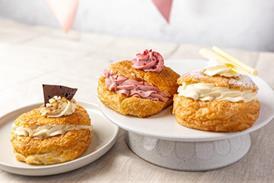
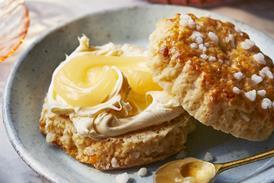
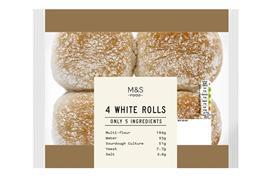
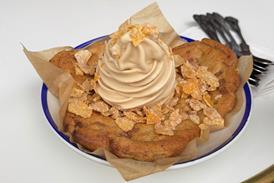



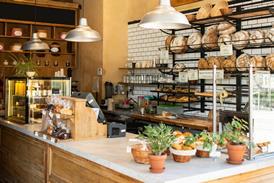



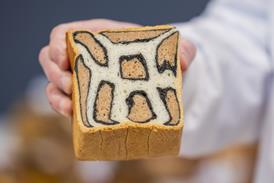
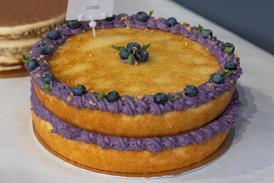
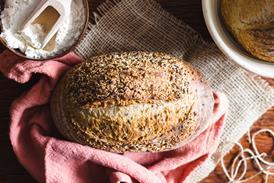
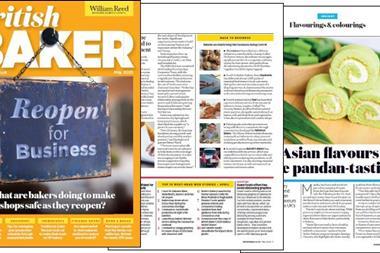
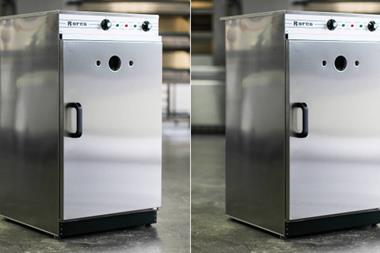
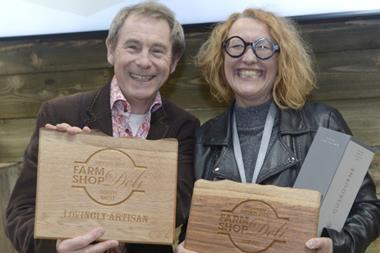
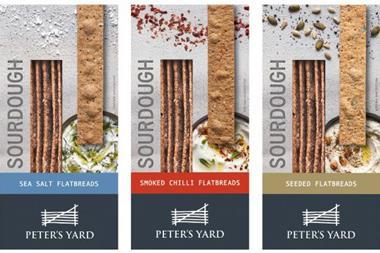



No comments yet